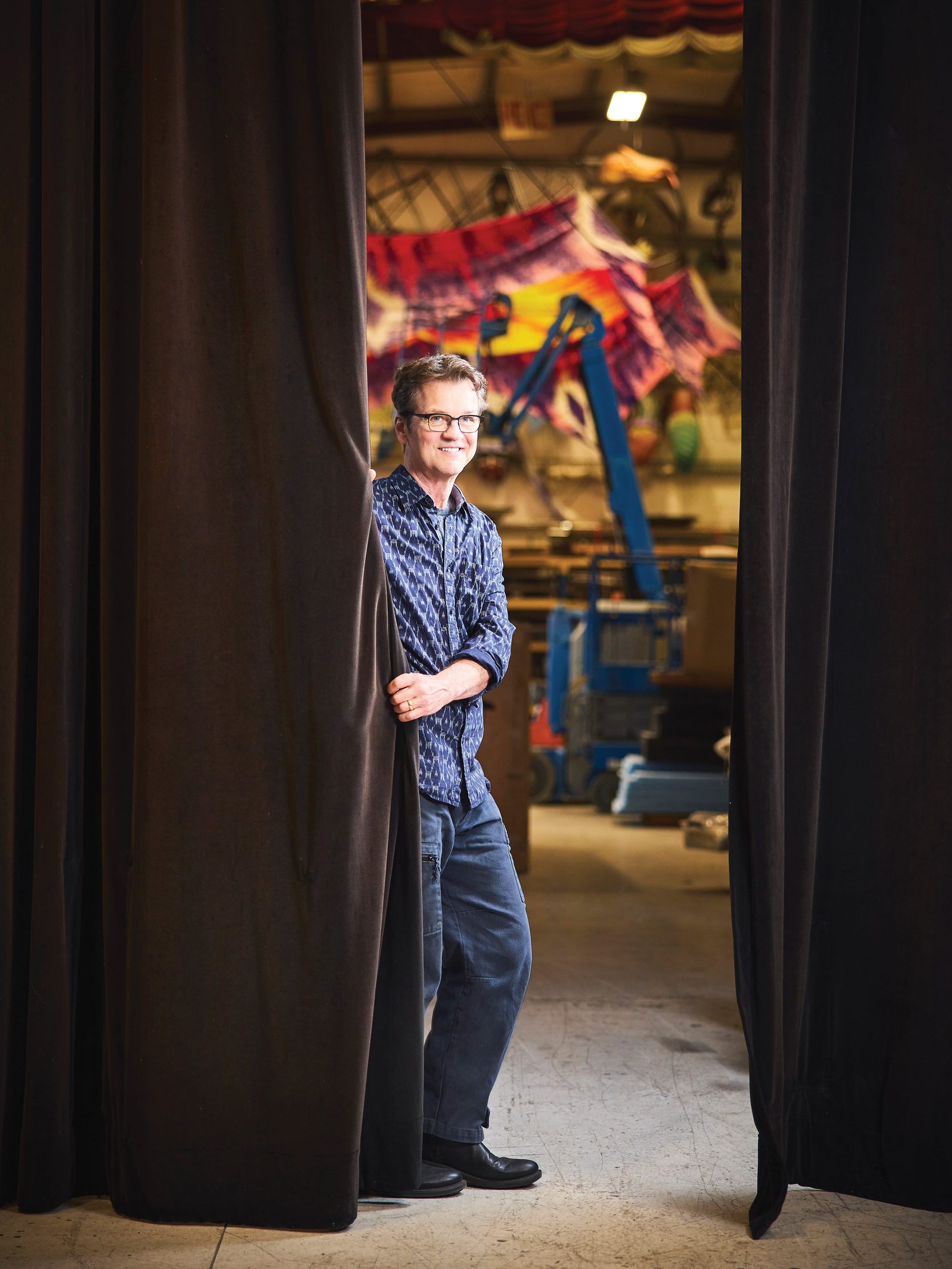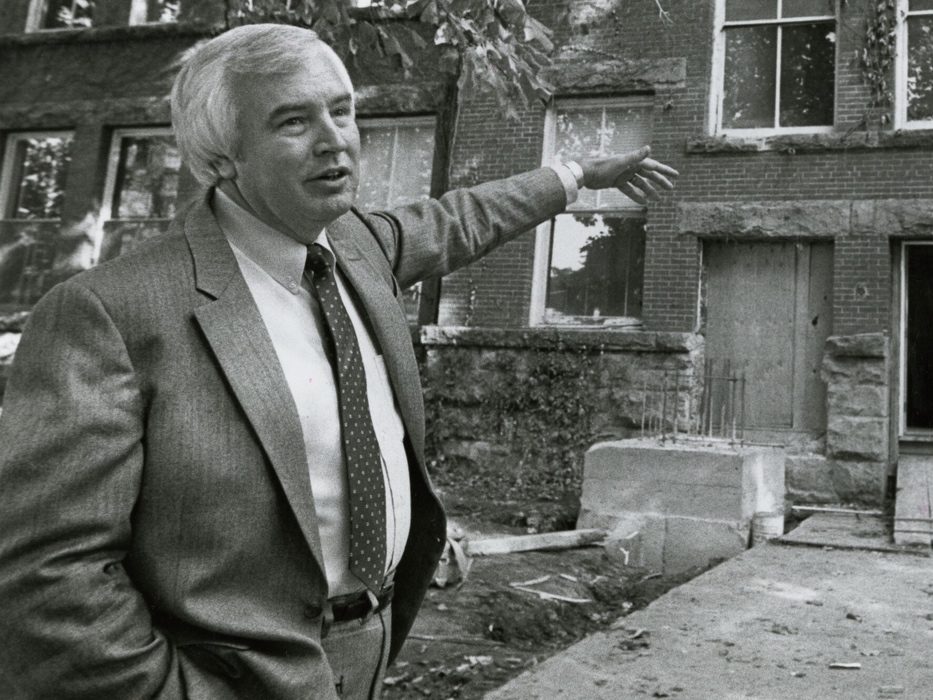M
Meandering around the piers at one of the country’s busiest heavy industrial zones chatting up anglers might not be what most people think of when envisioning a day in the life of an artist.
That unlikely scene, however, is the basis for a collaboration between Portland-based artist Cat Ross BFA’18 and the National Oceanic and Atmospheric Administration. As NOAA’s fourth Fisheries Art + Science fellow, Ross completed a six-week residency with NOAA Fisheries last summer, and then spent the following six months turning that experience into a creative multimedia project.
Ross (who uses she/they pronouns) is a researcher, creative technologist, and new media artist whose practice is centered in social and environmental justice. They spent much of the summer residency along the Los Angeles Harbor in Long Beach, California, searching out and interviewing people fishing for sustenance. Nearly three dozen fishers, representing a range of ethnicities and ages and in some cases including entire families, engaged in conversation with Ross. The objective was to help NOAA identify noncommercial fishing communities, specifically shore anglers and pole fishers, along the Long Beach coastline.
Ross explained the project to me as we sat in their creative studio, a room cocooned by the rest of the home, a 1914 bungalow in a working-class neighborhood of southeast Portland. By then, Ross had settled back into life in Oregon after completing the immersive part of their fellowship, officially known as the AICAD/NOAA Fisheries Fellowship. AICAD is the Association of Independent Colleges of Art & Design, of which Willamette’s Pacific Northwest College of Art is an affiliate.
Historically, sustenance fishers have been systematically excluded from communications around ocean and seafood safety. “They tend not to fit into mainstream channels where they might receive communication about fishing practices, and they are less likely to be involved in public meetings,” Ross explains. “The limited communication materials that do exist are sparse, outdated, and almost exclusively in English.”
Ross spent late July and all of August living in neighborhoods near the southerly ocean edge of Long Beach, a city of 450,000 residents, more than half of whom are people of color from historically marginalized populations. “The majority of folks I met on the piers and along the shoreline were of lower socioeconomic status, some houseless,” Ross says. “Most of the anglers belonged to BIPOC communities, and several had a first language other than English.” Ross attempted to communicate with all of those she saw. (It helped that, in addition to English, Ross is fluent in Spanish and French and proficient in Portuguese and American Sign Language.)
She interviewed these sustenance fishers in tandem with a NOAA fisheries expert. “People we talked to seemed to appreciate having a representative of the agency there,” Ross says. “They asked about, ‘Why haven’t I seen this fish around lately?’ and other questions that showed a lack of communication from NOAA and other agencies.”
“When I told them I am an artist, you could tell they were really excited to talk. Many self-identified as artists,” continues Ross. “I asked questions like: ‘How long have you been fishing at this location?’ ‘What are you catching?’ ‘Are you cooking this at home?’ ’’
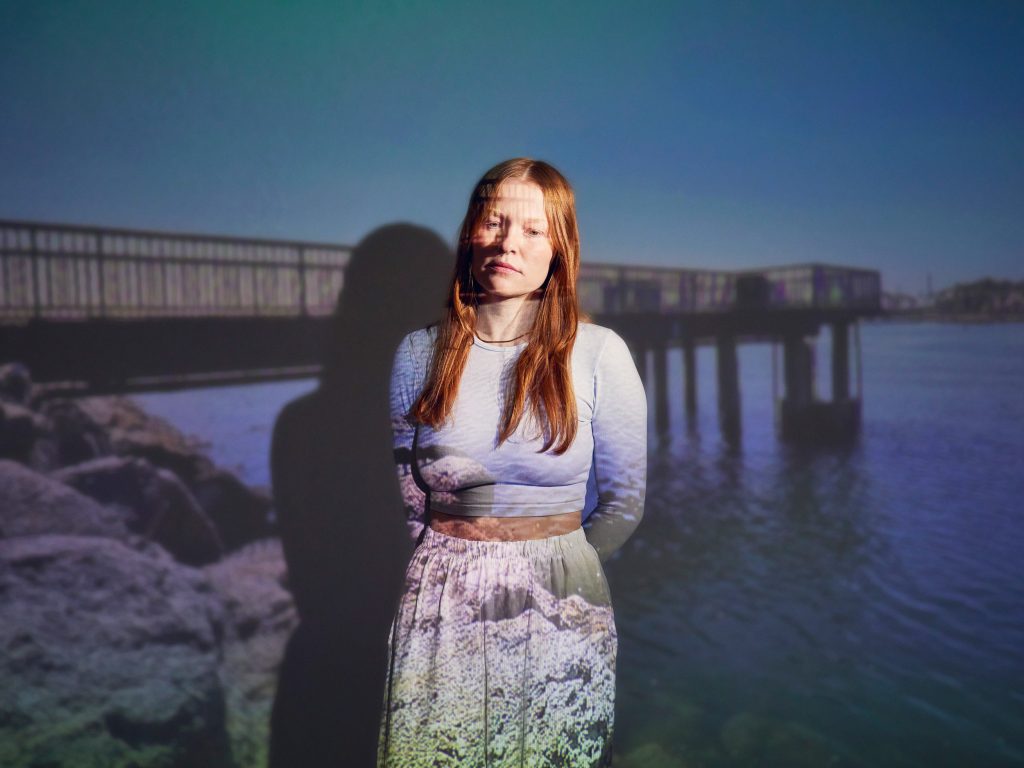
“Virtual reality and augmented reality aren’t really tools that we immediately reach for in a government agency.”
For Ross, interviews like those with the Long Beach fishers are fundamental to the artistic process. “My job is to humanize the people who need to be served,” Ross says. “Ninety percent of my work is research and interviews—reading, writing, and then creating some sort of artistic expression based on all of it.”
And the artistic expressions are varied and sprawling. Ross’s proficiencies range from oil, watercolor, and acrylic painting; to live dance performance; to sound production. As a creative technologist, Ross melds artistic abilities with burgeoning technologies—think virtual and augmented reality, spatialized sound design, 3D environmental design and animation, and data visualization. For example, one of her upcoming projects focuses on the experiences of people living in South Los Angeles in neighborhoods disproportionately polluted by petroleum extraction. Titled Gone to Water, it is an immersive documentary co-created with the people it is about.
Gone to Water is a product of Love Death Design, a creative studio Ross co-founded with Marin Vesley BFA’18. The studio’s purpose is to develop “immersive experiences to challenge systemic injustice and raise awareness around environmental issues.” Gone to Water is scheduled to be screened in June at the Czong Institute for Contemporary Art’s New Media Art Conference and Exhibitions in Korea. Ross’s prior work includes collaborations with the Oregon Museum of Science and Industry, EYEBEAM, Portland Institute of Contemporary Art, Pacific Works NW, Center of Contemporary Art and Culture, Place Galley, and Indivisible Gallery, as well as virtual shows.
One of Ross’s early wins was being selected, while a PNCA student, for a residency at PNCA with NOAA Fisheries, a precursor to the AICAD/NOAA Fisheries Fellowship. That opportunity took Ross to Newport, Oregon, out to sea to count fish with NOAA officials on commercial fishing boats, and into local seafood processing operations. For that project, Ross collaborated with a Newport dance studio on a performance for the community and made a series of paintings.

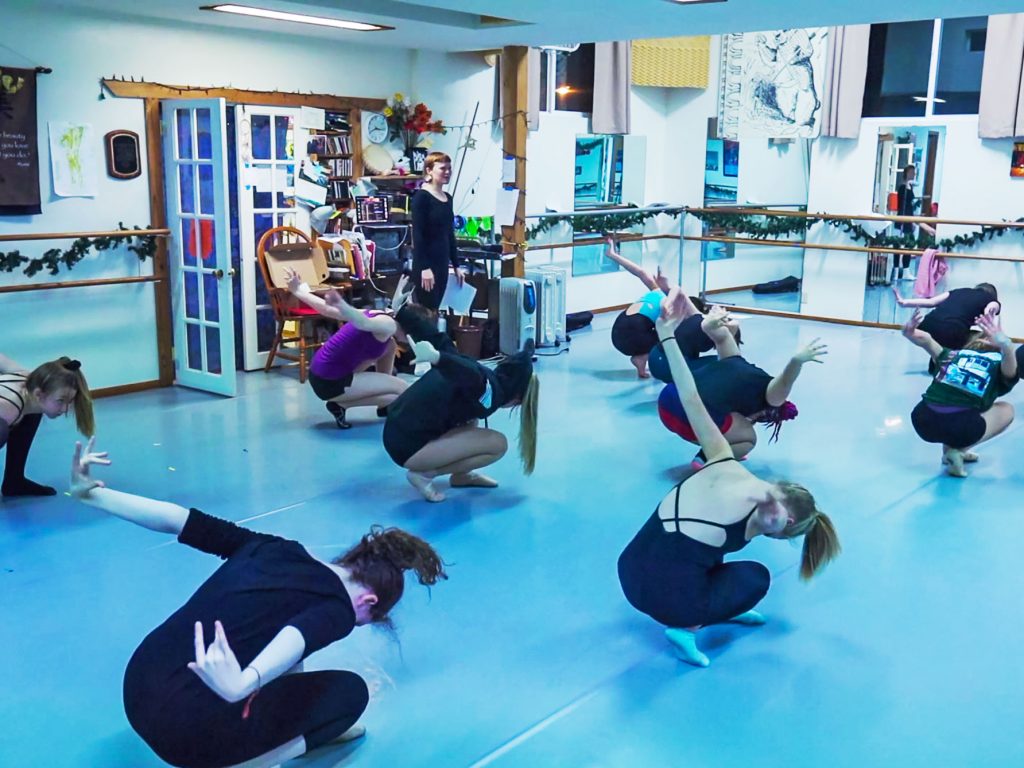
Ross sees origins of her artistry in her Pocatello, Idaho, upbringing: “When I was growing up, in our household there was always music and dance, and discussion about environmental issues.” She describes passionate parents who came of age during the civil rights and Vietnam War eras. “My mom was a composer and creator. My dad was a lawyer working on behalf of several tribes across the PNW for land and water rights protections. It really shaped my sensibilities around environmentalism and social justice, as well as my capacity to use art as a tool for change.”
As a teenager, Ross left home and moved to Oregon: “I saw it as more forward-thinking out here.” But she wasn’t looking to put down roots and left to see the world, spending roughly fourteen years traveling, living, and working in twenty-five countries. At age twenty-eight, Ross came back to Oregon, this time to build a career as an artist: “It was an intention of mine to level up what I was doing by going to a fine arts institution. I chose PNCA because I wanted to push the boundaries of how my art would be perceived, and because it’s a prestigious, well-established art institution.”
The work Ross has done since graduation feels like a natural extension of their experience. The Long Beach fellowship, for example, presented an opportunity to work at the intersection of art, science, and environmental justice. “I saw this as an opportunity to engage with coastline communities most impacted by environmental racism and ocean toxicity, and to reflect the experiences they shared with me back to NOAA,” Ross says.
The shore fishers Ross met in Long Beach reel catches from water most people would bypass if they could choose water from which to catch a meal. “Heavy industry is all around, and it’s not invisible. You can see the markers, like the night sky lit with oil flares. Wilmington is a few miles away,” says Ross, referring to a neighborhood sandwiched between one of the country’s largest oil refineries and Interstate 710, the main artery for truck traffic into and out of the Port of Los Angeles. The port is the busiest in the Western Hemisphere. The Los Angeles Times has called the neighborhood “an island in the sea of petroleum.”
And the problems date back many decades. According to the Environmental Protection Agency, petroleum refiners, the military, and other entities legally dumped chemical waste, garbage, and even radioactive substances off the beaches of Southern California from the 1930s until the early 1970s. To this day, a huge concentration of chemicals rests in containers around Catalina Island, twenty-nine miles from Long Beach. When reporting in the LA Times spurred public interest in this, the EPA and other public agencies reopened investigations into the historic pollution.
Here are the fishers in their own words, from some of Ross’s interviews:
“You can see when fish are contaminated. They look sick. Just look at these dark spots: that is the discoloration of their organs . . . . And see how the scales are falling off?”
“I pay attention to what species are okay to eat off this pier, because I know that there is runoff, even sewage from the city, that ends up in the water.”
“I’m a drifter, I guess you could call me homeless. The beach is my home. Forty-eight years I’ve been fishing for my dinner off this pier.”
“Thirty years ago you would see so many barracuda and bonito out here. They aren’t around anymore. It’s like they disappeared.”
“This pier is important to our family. We’ve been coming here for almost three generations.”
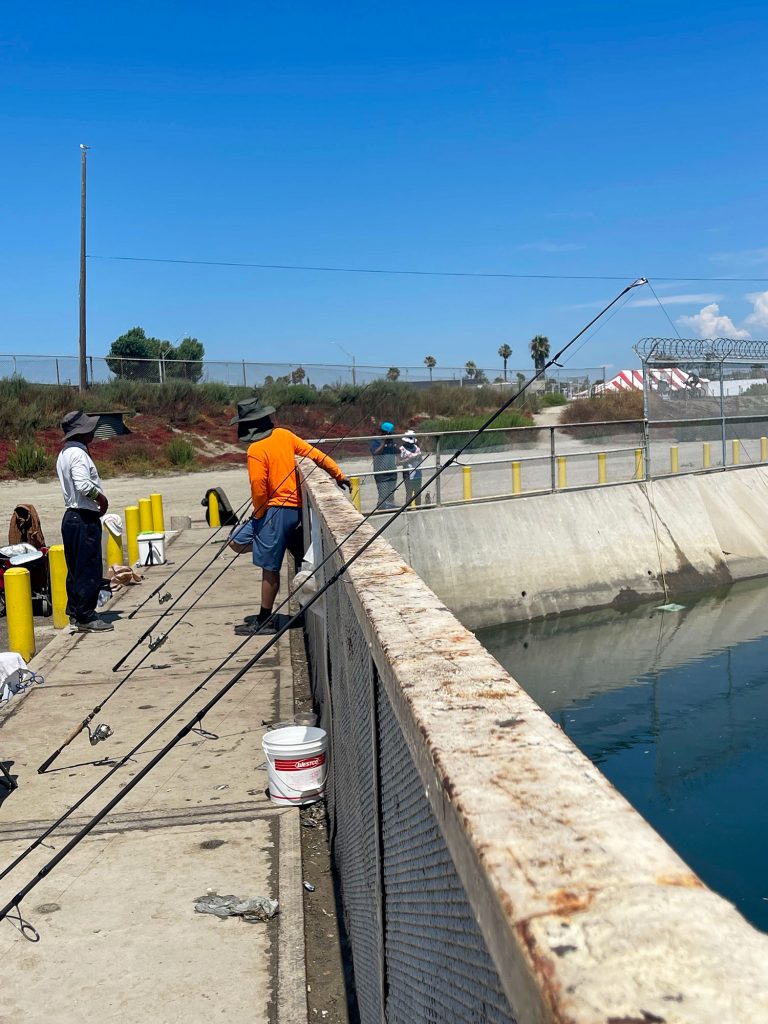
“Everyone knows the water is contaminated,” Ross says. “Yet there are people fishing for sustenance off piers and beaches around Long Beach. It is due to both need and lack of awareness that some folks are consuming what they catch off this coastline.”
That fishing continues along the shoreline is evidence of an abyss between sustenance fishers and public agencies such as NOAA—an abyss Ross hopes to bridge. As the agency responsible for understanding and predicting changes in climate, weather, oceans, and coasts, NOAA plays a key role in communicating with people who rely on fisheries, whether commercial, recreational, or sustenance.
Ruth Howell handles communications and external affairs for the West Coast region of the agency. As part of that work, she hosts the Art + Science fellowship. “Within NOAA in the past five years,” Howell says, “we started to recognize that, even though as a natural resources manager social justice isn’t our mandate, we are managing a public resource. The way we had been managing, many communities were unaware of how to engage with us. There are many communities we weren’t serving well or weren’t aware of.”
“Fish are a source of protein and sustenance for this population; fishing is their recreation and provides mental health and wellness,” Howell continues. “No doubt they find community along the shore, make friends with each other. Many bring their families. There’s a lot going on there that [NOAA] isn’t aware of. And we’re positive their voice is not being heard by federal fisheries management officials.”
Finding that voice and giving space for it to be heard within the agency requires careful navigation. “Some of the people fishing on the docks may not be documented; they likely aren’t English-first speakers,” Howell says. “If agency officials were to go down to the docks with our NOAA logo hats and jackets, we might be intimidating. However, an artist approaching them is much less intimidating.”
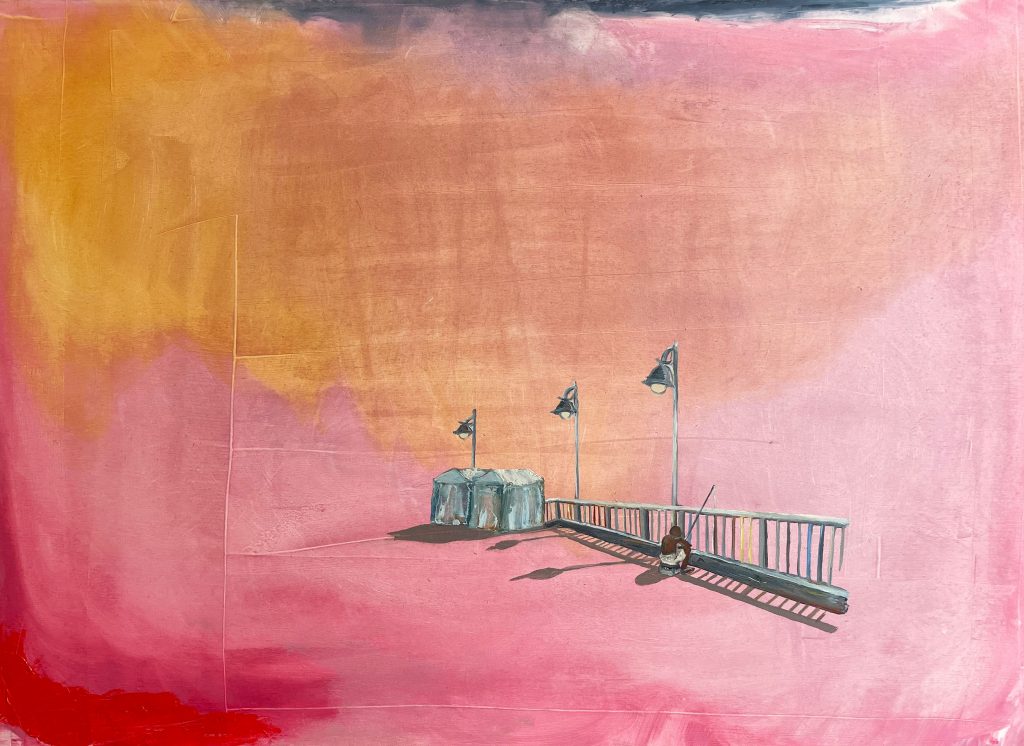
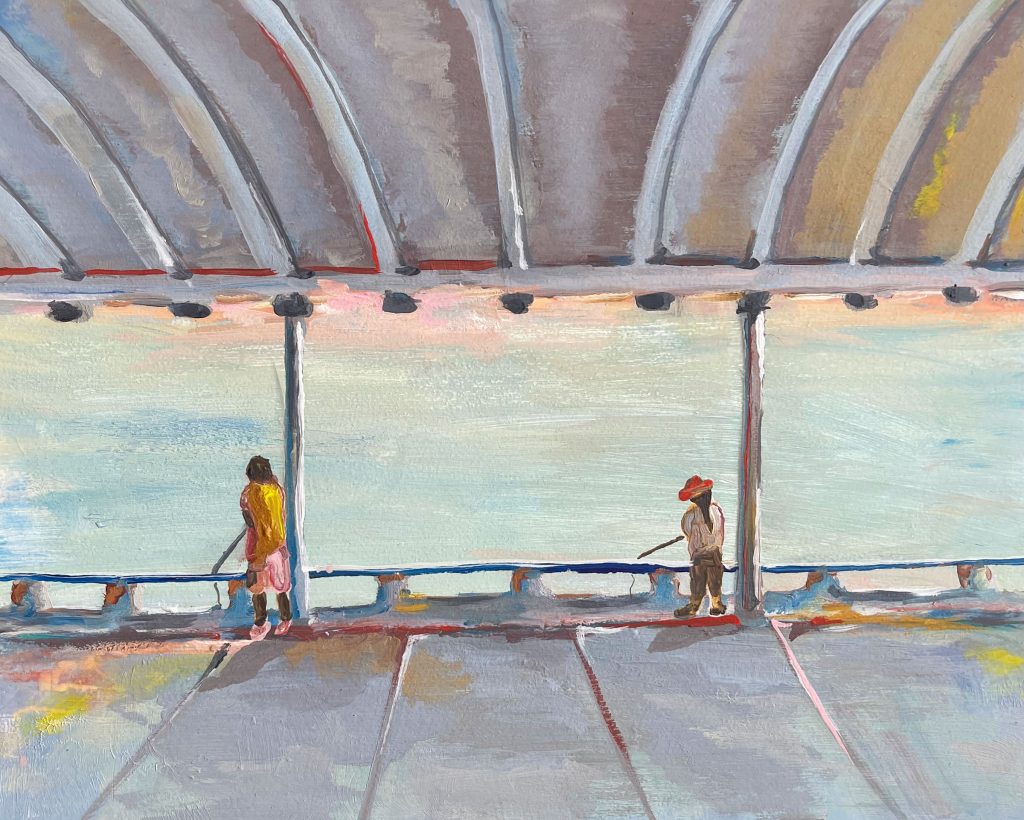
↑ Oil paintings from the series Ross created from the fellowship. They are part of Ross’s larger multimedia project about people she met along the pier.
According to both Howell and Ross, learning about the concerns and practices of the shore fishers can be the first step in building meaningful connections and valuing the fishers as stakeholders in managing the fishery. “For us at NOAA, success looks like advancement of our knowledge of the community, having art pieces to help us reflect on what Cat has learned from being out there on the docks, and making new connections with the community of Long Beach’s shore-based fishers,” Howell says.
Bringing in an artist to help solve a bureaucracy’s challenges also allows that bureaucracy to apply new perspectives and technologies. “Virtual reality and augmented reality aren’t really tools that we immediately reach for in a government agency,” Howell says. “An artist lets us see how we can apply those to our work.”
The centerpiece of Ross’s deliverable is a web story to be rolled out this spring. (Find it at catross.net.) Web stories are an emerging type of art that usually combine visuals, writing, audio recordings, and interactive elements. “It incorporates my research—direct quotes and other findings from the interviews—along with a series of paintings that reflect my time on the waterfront,” Ross says. It also helps the viewer to visualize relevant data about the fishers and fishery. She crafted printed items—flyers, magnets, stickers—to share among the shore fishers with the hope they will engage with the information in the web story.
“We’re still figuring out how to do our work through a lens of social justice,” Howell says. “A lot of translation is needed for us to get there. And an artist is in a position to translate across cultures and across a bureaucracy and all its silos. We selected Cat because she could bring that to us and help us along that journey.”
••
Shelly Strom is a longtime Portland-based journalist.


